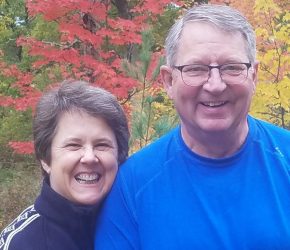As far back as we can imagine, human beings have marked the passing of time using the movement of the sun, the moon and the stars. Kings and Emperors have set the calendars and priests and shamans have designated holy days. The Hebrew people’s calendar goes back as far as the time of the Exile in Babylon, with the New Year, Rosh Hosanna, falling in October.
The early church established festival days and identified seasons leading up to or following those holy days, each with their own mood, color and emphasis. Most Christians follow what is called the liturgical year, a calendar distinct from the secular calendar. Our church year begins not in January but 4 weeks before December 25th. While the rest of the world is singing Christmas carols and partying in December, the church established a counter-cultural tone by observing Advent, a four wee season of hopeful waiting, expectation and preparedness for welcoming Christ into our lives. The season of Christmas in the church is only 12 days long, from Christmas Day to Epiphany, the season that starts with the celebration of the star that led to magi to Jesus and continues until Ash Wednesday, the first day of Lent. Epiphany’s theme is revelation, how we see Christ showing up in the world, and in our lives.
Ash Wednesday is determined by counting back 40 days, not counting Sundays (since every Sunday is a celebration of the resurrection) from Easter. In the year 325 the leaders of the Council of Nicaea decided that Easter would be held on the first Sunday after the first full moon occurring on or after the vernal equinox, which is why Easter isn’t on a set day each year but varies according to the moon. Lent, like advent is supposed to be a time of preparation for the celebration of Jesus’ resurrection. It has often been a time for considering our sinfulness, marked by making sacrifices to remind us of what Jesus gave for us all. It is a time for extra prayer, self-discipline, bible study, service and devotion.
Holy Week starts with what used to be known as Palm Sunday , most often now referred to as the Sunday of the Passion. Maundy Thursday is the day that remembers the last supper and the foot washing, Good Friday focuses on the crucifixion, and of course Easter focuses on the resurrection. The season of Easter examines the post-resurrection appearances of Christ and leads up to Pentecost Sunday when the Holy Spirit descended like a dove in tongues of fire on the early church gathered in Jerusalem. The season between Pentecost and Advent is called Ordinary Time or simply the Sundays after Pentecost. During that long season we get the stories of Jesus’ life and ministry, his parables and teachings.
Ever since its earliest days the church has established a schedule of scripture readings for each Sunday and festival of the church year, based on the seasons. That system of readings is called the lectionary. It is a three year cycle of readings that includes an Old Testament reading, a psalm, a New Testament reading and a gospel text. Year 1 or A has readings from Matthew, Year 2 or B Mark, Year 3 or C Luke and John’s gospel is divided among the three years. The plan is designed to lead worshippers through nearly the entire Bible every 3 years.
Today is the first Sunday in Lent. Every year we hear the story of Jesus’ temptation in the wilderness. This year, year C, we also stand with the ancient Israelites on the edge of the wilderness, looking into the promised land. There is the Jordan River valley, where Jesus’ cousin John will baptize him centuries later and God will name him, and every child of God, as beloved.
Lent invites us to step intentionally into that which is broken and torn, a space in which we learn to be vulnerable again so that we may journey into the very heart of God. We slow our pace during these 40 days because the landscape of Lent takes us through the wildernesses of our own hearts and souls, where we must walk carefully, think deeply, allow our hearts to be broken open, lay bare all that is hidden, buried, or repressed.
Lent is un-apologetically counter-intuitive. It continues the work that Mary sang in the Magnificat of the world turned upside down, where the lowly are lifted up and the mighty are brought down from their thrones. Lent, like Advent, is a turning an overturning, a re-turning. Lent disrupts the conventional wisdom of a world that says we begin in life and end in death.
Many congregations observe Ash Wednesday, a smudgy reminder that death is only the beginning, a cross on a forehead as a declaration to the world of our intention to die to all those things that keep us entombed, pride, avarice, self-doubt, fear, isolation, cynicism and every single other barrier that prevents us from living a wholehearted existence with God. It is a yearly reminder that we are mortal and each moment is precious. The ashes challenge us to be fully human, to acknowledge that life is hard. It comes with unwelcome diagnoses, seemingly insurmountable challenges, impossible decisions, systematic injustice, grief, pain and loss.
The ashes of Lent set the tone for the season and mark our mortality. Yet, we are on a journey of life. We face situations that break our hearts daily, and yet we declare those hearts belong to God. We admit that we have strayed from the pathways of righteousness, even as we profess our repentance and turn toward the good.
Ash Wednesday’s text includes the prophet Joel’s call out across the millennia, “Yet even now, says the Lord, return to me with all your heart, with fasting, with weeping, and with mourning; rend your hearts and not your clothing.”
Rend your hearts! Break them open! Those walls that you have built around your hearts to keep them safe and comfortable shut me out! Those walls block everything that makes you so delightfully and uniquely human! Remember that you are fearfully and wonderfully made! Turn around; come closer; come home,” says our God.
This is the call of Lent. When things seem hopeless, when there is fear and trembling in the land and a day of great darkness descends, and armies are encamped just outside the gates of our well-guarded hearts, that is when the call to return to God becomes most urgent and necessary. The lectionary texts for each week are blessings that God has left us, like a trail of breadcrumbs, that lead us into resurrected lives. Fed and nourished this way, we can endure the wilderness. The heart of all heats will not leave us wandering and directionless. Each Sunday there will be a signpost taht marks another step toward life, toward the rising that takes place once we are brave enough to rend our hearts. There is an old gospel song that we’ll sing next Sunday that suggests an image of God sitting on the porch in a rocking chair waiting for us, wayward children that we are, to find our way home again. Through blessing, breadcrumbs, Scripture and ash, the heart of our God is calling, “Come home. Come home. You who are weary come home; calling O Sinner come home!”
Today’s Old Testament lesson invites us to stand on the edge of the wilderness today, looking over Moses’ shoulder, and Jesus’ shoulder, so to speak. We look ahead into the promised land of life in Christ, of rising with him. The Old Testament text carries a story that the Israelites are asked to repeat over and over as they bring their first fruits to the priest to be blessed. “A wandering Aramean was my ancestor…” the story begins. It is a reminder that even when thy have inhabited the land for such a long time that they come to the Temple with their arms laden with the fruit of their harvest, they never forget to whom the land truly belongs and the story of how they came to be. It is a story that grounds them in a tale of survival and struggle. Even when, perhaps especially when, they begin to get comfortable and are tempted to forget that it is God from whom all blessings flow, they are called to remember. This history called to mind the truth that at some point we have all been hungry, nomadic, rootless, dispossessed, dependent on God and one another for comfort, care, and survival. Maybe not in our own lifetimes, but certainly in the lives of those who came before us.
My own grandma told the story of her journey from Norway to North Dakota, hungry and longing for a small coin to buy an apple from a woman selling the fruit on the train. My grandfather had been sick on the boat across the ocean and shifted from one line at Ellis Island to another, afraid of the officer in the first line who seemed to be scrutinizing the immigrants more closely than the other officers.
The Deuteronomy text ends with a celebration, a feast where those who cannot or do not own the land will feast with those who do! If we look one verse forward we see that the priests, the immigrants, the widows and the orphans are included. This is a journey that ends in all being fed. This is the promised land–heaven come to earth–this is the purpose of remembering this story. When we recall our own vulnerability, our own desert wanderings, then we are more apt to include those on the margins who know too little joy, compassion or kindness.
Powerful things happen when we remember, when we look from the wilderness toward the promises of God. Our hearts as well as our tables become more open, more generous. We recognize the abundance of gifts we have been given is meant to be shared. Suddenly our hearts and our tables begin to look more like God’s heart and Christ’s table. “Do this in remembrance of me,” Christ says. Tell this story, eat this bread, drink this cup share all that you are and all that you have in Christ’s name. Amen.

